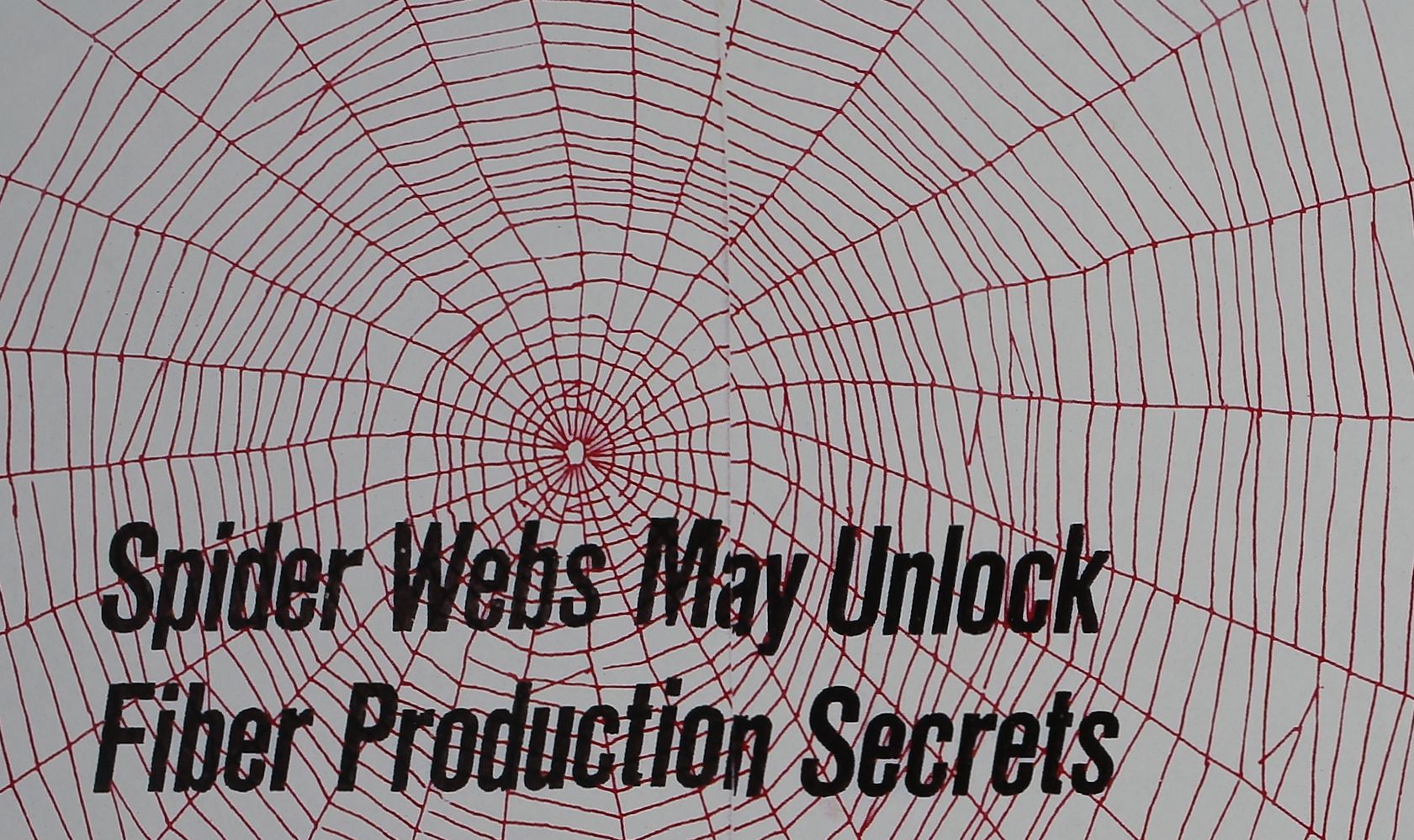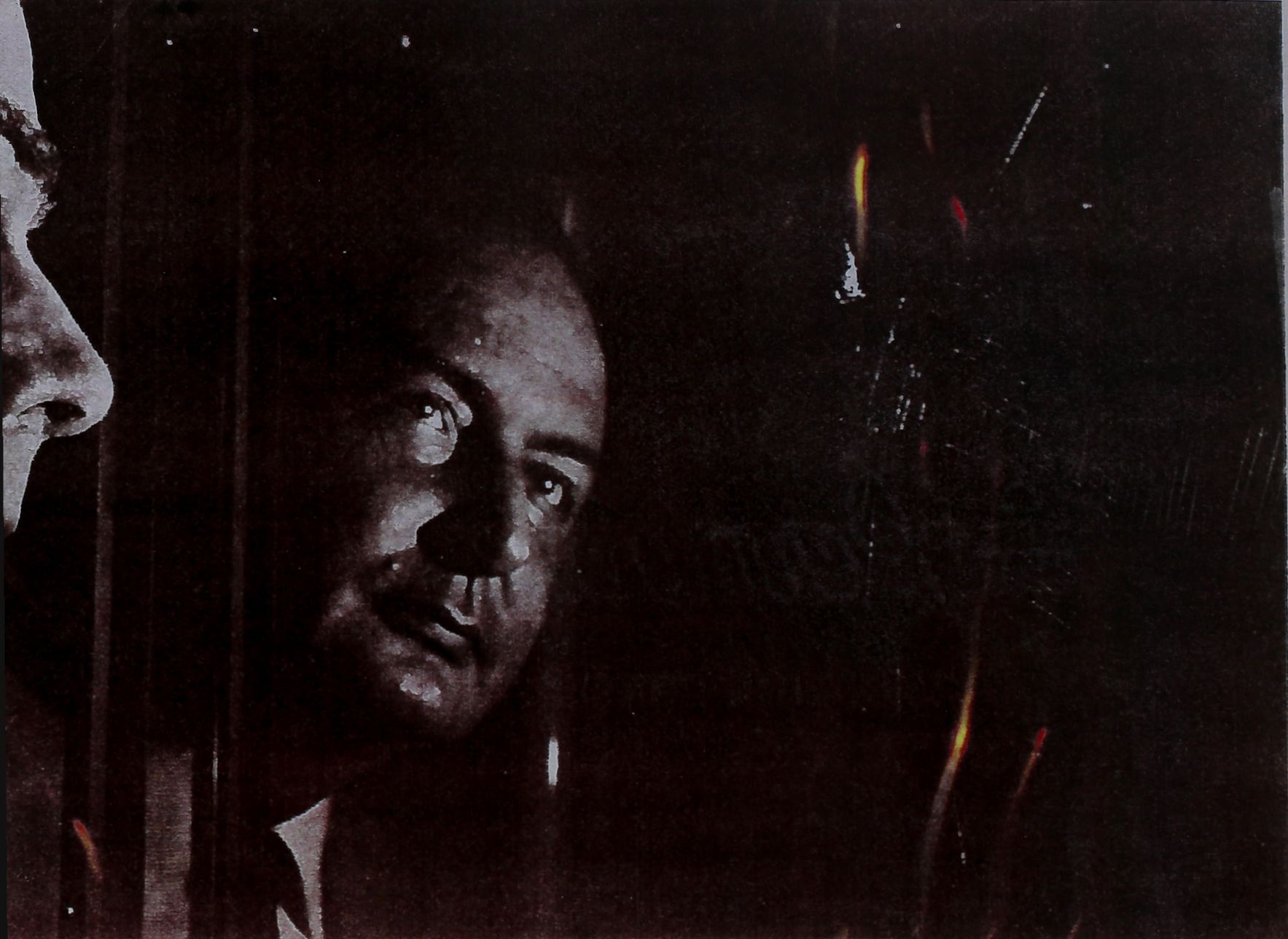Images Collection
View this article in Search Friendly Plain Text
NOTE: This plain text article interpretation has been digitally created by OCR software to estimate the article text, to help both users and search engines find relevant article content. To read the actual article text, view or download the PDF above.
£\\
>?ahiiX/iimt^dasis7fn7ri*Rtiki)nl oTr^Jjl&r^
SpiHfirw&^s mqy molc^^^fal cla thatmodern-.
fiber –y~—
\I\ p\ploV£djj^^ni»..
fe^o/&obt^tsWN^^ U ScliuOl uf Tfe.lile>; •
\ r>A ’‘The Alpha-Beta?
i|i k Poly peptic! esapRe-tbv^he’Rpynmtion^tt^/Properties ui Fibt^rs so*
for the prcnectT
Dr. u^riNvuy4^ ol assoclaui& In V^li-
dies imfKovy^ontn^^v AvnmiTnTr^~j^e4^ta^ phenomeniNjjHiich fnvmflt.inTrTrTTrttgr
termine thej4xecnTerr^pbWirnl properties possessed by spider sflk§T^^_ \
“Amons scientists th< re is very nine aiuiu standing of how the spicbr, by ‘doing what comWj naturally,’ easily makes i solid fiber from a liquid j polymer,” says Work, fIn comparison,” he ex-! plains/“nylon must be melted at 525 degrees FahiV enhei/, extruded under thousands of pounds of presi j sure/and stretched to/several times its original1 length in order to secure an equally strong fiber. ”Y An initial $5,000 research grant from Research! Corporation of New York City will provide I sti-‘ pcfcnd for one year’s study by a graduate studem working under Dr. Work’s direction in an effort to determine the structure and properties of the ex-f tremely strong silk/strands used by .the spider to support its orb well.
-ATU^a^^olyf $52y^^rcmt Crow The NatiomuAv
/ised if rateavai /ime^ tine limi^olvmer fnom/thyixlmef and i^netlw i^aip^yCOiwer)^M\^ fij&er .mfl ei/fon/r oh ^oWdrwons a<rfclsheary&ra./// /
/ / / B
^ SiUQi^UpH^ / / ‘
mobile ;
_–si!lWaT!tories^G^di^i^ materials, j
t r a irefopHijJg^ f filW strands,
siiig-‘CTfe^ 1 weaving of in- I
■'”tncajlßJjf”Tl^^ beautifiik webs, !
Wifmtiva^rrpM^ps ha\e unique and special -i7.pcLtca^<w]iiofrliav « enabled them to weather eons of enyKPrtfnental changes. Their inherent expels ‘Tlse anck economy of junction present tantalizing goals foAfiber makers\using manVmade materials and machines. \ \
Spider silks, a variety W complex rtauid proteins produced by five or six special abdominal glands, are extrude« as solid fibers from the spider’s body by clusters oYtiny nozzled spigots, or spinnerets, as they are called by entomologists. These fibers, pos-: sessed of special and different physical properties,
I their precise Vorm determined by the spinnerets, i are drawn from the minute nozzles by the spieler’s j hindmost legs.\ \ \
Serving as both home and htinting preserve ibr Ithe spider, the orb web contain^ several kinds oY jKilk for use as attachment points, cables, anchor

lines, orb radials and spirals and egg cocoons. The silk also becomes the swathing bands which detain a captured prey until dinner time. All these end products are the result of a complex but unified system of production planned and carried out by the spider alone. From the intricate “factory” in the spider, man may gain knowledge which will be basic for use in the laboratory and in industry.
Working with Professor Work and his associates in the University will be Dr. Peter N. Witt, research director of the North Carolina Department of Mental Health, whose work on the internal chemistry of spiders is well known. Dr. Witt’s dramatic photographs of spider webs spun by “drugged” spiders are an exciting and important contribution to the study of the effect of certain drugs on human biochemistry and behavioral patterns.
Opportunities Open
Commenting further on the current research on spider polypeptides and the fibers produced from them Dr. Work says, “Although broad objectives of the spider research relate to the basic phenomena associated with fiber formation, it may be hoped that when a bette}- und( rstanding is developed, the results will find advantageous application in the man-made fiber industry.”
The spiders which will occupy the labs under a variety of controlled environmental conditions are known to zoologists as Argiope aurantia. To the average householder, they are just ordinary, garden variety, golden spiders.
It’s exciting to contemplate what those glistening, dew-drenched wehs may contribute to North Carolina’s number one industry.
Dr. Peter N. Witt and Dr. Robert N. Work Study Spider IT’ebs


